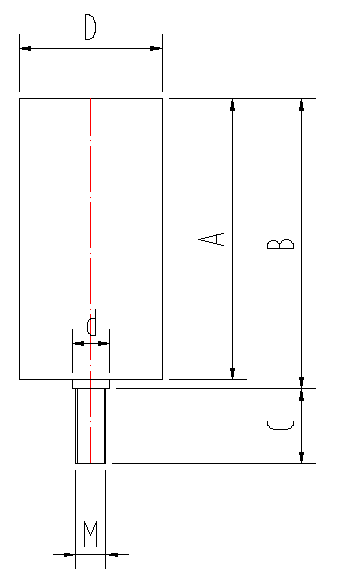 Afrikaans
Afrikaans  Albanian
Albanian  Amharic
Amharic  Arabic
Arabic  Armenian
Armenian  Azerbaijani
Azerbaijani  Basque
Basque  Belarusian
Belarusian  Bengali
Bengali  Bosnian
Bosnian  Bulgarian
Bulgarian  Catalan
Catalan  Cebuano
Cebuano  Corsican
Corsican  Croatian
Croatian  Czech
Czech  Danish
Danish  Dutch
Dutch  English
English  Esperanto
Esperanto  Estonian
Estonian  Finnish
Finnish  French
French  Frisian
Frisian  Galician
Galician  Georgian
Georgian  German
German  Greek
Greek  Gujarati
Gujarati  Haitian Creole
Haitian Creole  hausa
hausa  hawaiian
hawaiian  Hebrew
Hebrew  Hindi
Hindi  Miao
Miao  Hungarian
Hungarian  Icelandic
Icelandic  igbo
igbo  Indonesian
Indonesian  irish
irish  Italian
Italian  Japanese
Japanese  Javanese
Javanese  Kannada
Kannada  kazakh
kazakh  Khmer
Khmer  Rwandese
Rwandese  Korean
Korean  Kurdish
Kurdish  Kyrgyz
Kyrgyz  Lao
Lao  Latin
Latin  Latvian
Latvian  Lithuanian
Lithuanian  Luxembourgish
Luxembourgish  Macedonian
Macedonian  Malgashi
Malgashi  Malay
Malay  Malayalam
Malayalam  Maltese
Maltese  Maori
Maori  Marathi
Marathi  Mongolian
Mongolian  Myanmar
Myanmar  Nepali
Nepali  Norwegian
Norwegian  Norwegian
Norwegian  Occitan
Occitan  Pashto
Pashto  Persian
Persian  Polish
Polish  Portuguese
Portuguese  Punjabi
Punjabi  Romanian
Romanian  Russian
Russian  Samoan
Samoan  Scottish Gaelic
Scottish Gaelic  Serbian
Serbian  Sesotho
Sesotho  Shona
Shona  Sindhi
Sindhi  Sinhala
Sinhala  Slovak
Slovak  Slovenian
Slovenian  Somali
Somali  Spanish
Spanish  Sundanese
Sundanese  Swahili
Swahili  Swedish
Swedish  Tagalog
Tagalog  Tajik
Tajik  Tamil
Tamil  Tatar
Tatar  Telugu
Telugu  Thai
Thai  Turkish
Turkish  Turkmen
Turkmen  Ukrainian
Ukrainian  Urdu
Urdu  Uighur
Uighur  Uzbek
Uzbek  Vietnamese
Vietnamese  Welsh
Welsh  Bantu
Bantu  Yiddish
Yiddish  Yoruba
Yoruba  Zulu
Zulu conveyor drum
The Importance of Conveyor Drums in Industrial Operations
Conveyor systems play a pivotal role in various industrial sectors, facilitating the efficient movement of materials over short or long distances. At the heart of these systems lies a crucial component known as the conveyor drum. Conveyor drums, also referred to as pulleys, are cylindrical devices that help in driving the belt of a conveyor system, ensuring smooth and continuous operation.
The primary function of a conveyor drum is to provide the necessary tension and support for the conveyor belt. They work in conjunction with other components such as idlers, rollers, and the belt itself, forming a cohesive unit that aids in transporting goods. The drums are typically placed at both the beginning and the end of the conveyor system, with one drum serving as the drive pulley and the other as the tail pulley.
The design and materials used in manufacturing conveyor drums are critical to their performance and longevity
. Commonly made from steel, aluminum, or rubber, these materials are selected based on factors such as load capacity, environmental conditions, and specific application requirements. For instance, rubber-coated drums offer better grip and reduce slippage, making them ideal for steep inclines or heavy loads. In contrast, steel drums are favored for their strength and durability in harsh environments.conveyor drum

One of the key considerations in the design of conveyor drums is their ability to withstand wear and tear. As the conveyor belt moves, it creates friction against the drum surface, which can lead to degradation over time. Therefore, it is essential to employ high-quality materials and innovative engineering solutions to enhance the lifespan of these components. Regular maintenance, including inspections and timely replacements, can also help prolong the life of conveyor drums and ensure optimal system performance.
Another significant aspect of conveyor drums is their role in enhancing energy efficiency. Properly aligned and calibrated drums minimize friction and energy consumption, allowing the conveyor system to operate smoothly without unnecessary power expenditure. Additionally, well-maintained drums contribute to reduced operational costs by limiting wear on the conveyor belt itself, resulting in fewer replacements and downtime.
In conclusion, conveyor drums are integral to the effective functioning of conveyor systems across various industries. Their design, material composition, and maintenance protocols are all crucial for guaranteeing reliability and efficiency. As industries continue to evolve and demand more sophisticated material handling solutions, the importance of high-quality conveyor drums will remain paramount. Investing in advanced drum technology not only enhances operational efficiency but also supports sustainable practices by reducing energy consumption and waste.
-
Revolutionizing Conveyor Reliability with Advanced Rubber Lagging PulleysNewsJul.22,2025
-
Powering Precision and Durability with Expert Manufacturers of Conveyor ComponentsNewsJul.22,2025
-
Optimizing Conveyor Systems with Advanced Conveyor AccessoriesNewsJul.22,2025
-
Maximize Conveyor Efficiency with Quality Conveyor Idler PulleysNewsJul.22,2025
-
Future-Proof Your Conveyor System with High-Performance Polyurethane RollerNewsJul.22,2025
-
Driving Efficiency Forward with Quality Idlers and RollersNewsJul.22,2025





























